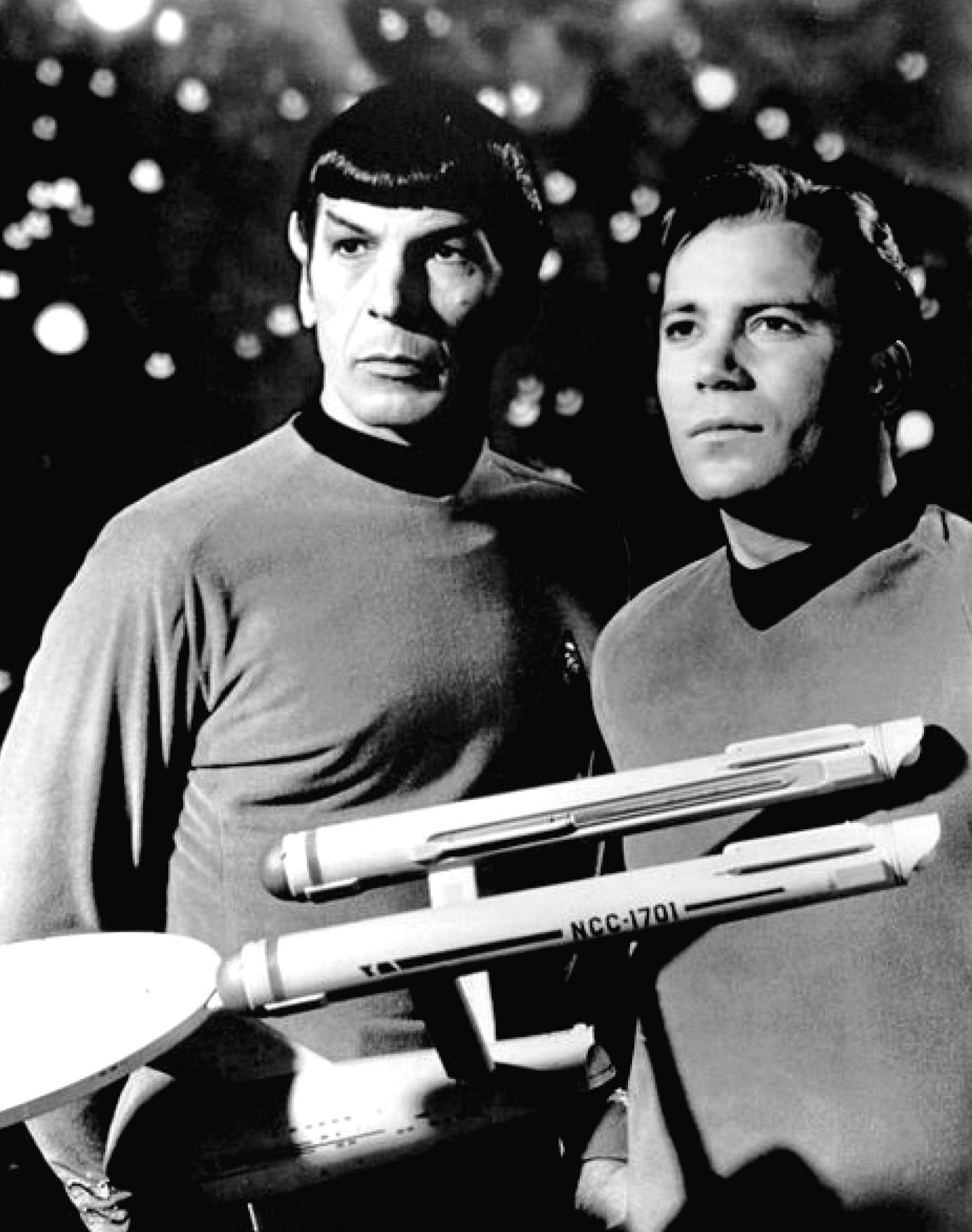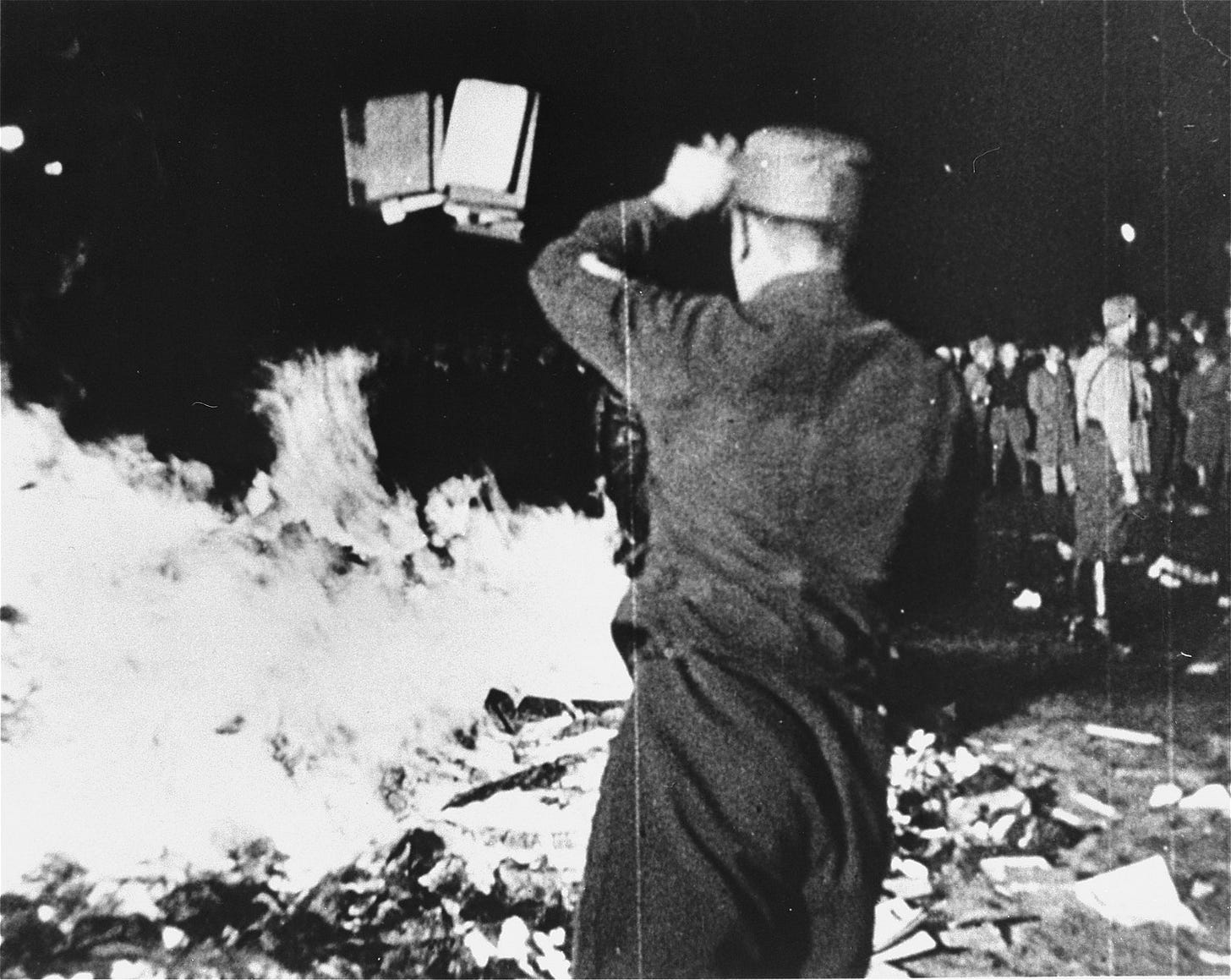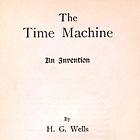How Sci-Fi Influenced Modern Technology and Innovation
The relationship between science fiction and technology is symbiotic, each influencing and inspiring the other in a dynamic feedback loop of creativity and innovation.
Science fiction, with its boundless imagination and visionary narratives, has long captivated the human imagination. Yet, its influence extends far beyond the realm of entertainment, permeating the very fabric of modern technological innovation. From the pages of speculative fiction to the laboratories of scientific research, the interplay between sci-fi and real-world technology has shaped the trajectory of human progress in profound and unexpected ways.
The relationship between science fiction and technology is symbiotic, each influencing and inspiring the other in a dynamic feedback loop of creativity and innovation. Throughout history, authors and filmmakers have dared to envision futures filled with fantastical gadgets, otherworldly landscapes, and groundbreaking discoveries. These speculative narratives, once confined to the realm of imagination, have sparked the imaginations of scientists, engineers, and inventors, propelling them to turn fiction into reality.
In this exploration, we delve into the fascinating intersection of sci-fi and modern technology, tracing the origins of inspiration, examining examples of sci-fi concepts transformed into reality, and reflecting on the broader implications for technological progress and innovation. From smartphones inspired by Star Trek communicators to ethical considerations raised by dystopian narratives, the influence of sci-fi on modern technology is profound and multifaceted.
As we embark on this journey through the realms of imagination and invention, we discover the enduring power of speculative fiction to shape the world we inhabit and inspire the future we dare to imagine. Join us as we unravel the influence of sci-fi on modern technology and innovation, where the lines between fantasy and reality blur, and the possibilities are limited only by the bounds of human imagination.
Origins of Sci-Fi Inspiration
Science fiction's influence on modern technology and innovation finds its roots in the fertile imaginations of early pioneers of speculative fiction. Authors such as H.G. Wells, Jules Verne, and Mary Shelley dared to venture into realms of imagination where the laws of nature yielded to the whims of creativity. Their visionary narratives, penned in an era of burgeoning scientific discovery, captivated readers with tales of fantastical voyages, technological marvels, and encounters with the unknown.
H.G. Wells, often regarded as the father of science fiction, penned iconic works such as "The War of the Worlds," "The Time Machine," and "The Invisible Man." In these novels, Wells envisioned worlds where humanity faced existential threats from extraterrestrial invaders, traversed the fabric of time, and grappled with the consequences of scientific experimentation. Wells' imaginative foresight laid the groundwork for generations of writers and inventors to explore the possibilities of speculative fiction.
Similarly, Jules Verne's works, including "Twenty Thousand Leagues Under the Sea" and "Journey to the Center of the Earth," captivated readers with tales of underwater exploration, subterranean adventures, and journeys to the far reaches of the globe. Verne's meticulous attention to scientific detail, combined with his flair for storytelling, inspired generations of readers to dream of exploring the uncharted frontiers of our planet and beyond.
Mary Shelley's "Frankenstein," often considered one of the earliest examples of science fiction, delved into themes of artificial life, ethical responsibility, and the consequences of unchecked scientific ambition. Shelley's exploration of the human condition in the face of technological innovation laid the groundwork for discussions about the ethical implications of emerging technologies that continue to resonate today.
These early pioneers of speculative fiction not only entertained readers with tales of wonder and adventure but also sparked the imaginations of inventors and scientists who dared to bring their visions to life. The seeds of inspiration planted by Wells, Verne, Shelley, and their contemporaries would germinate in the fertile soil of human ingenuity, giving rise to a new era of technological innovation fueled by the dreams of science fiction.

Examples of Sci-Fi Concepts Transformed into Reality
The influence of science fiction on modern technology and innovation is perhaps most strikingly evident in the myriad examples of speculative concepts that have transitioned from the realm of fiction to tangible realities. Across various fields of technology, from communication devices to transportation and medical advancements, the fingerprints of sci-fi can be found embedded in the fabric of modern society.
Communication Devices
One of the most iconic examples of sci-fi concepts realized in modern technology is the smartphone. Inspired by the futuristic communicators depicted in shows like "Star Trek," these handheld devices have revolutionized the way we connect and communicate. The vision of instant, wireless communication across vast distances, once relegated to the realm of science fiction, is now an integral part of daily life for billions around the globe.
Artificial Intelligence and Robotics
The concept of artificial intelligence (AI) and autonomous robots, long a staple of sci-fi narratives, has transitioned into real-world applications with profound implications. From personal assistants like Siri and Alexa to autonomous vehicles and industrial robots, AI-powered technologies are reshaping industries and societies. The vision of sentient machines and intelligent companions, once the stuff of science fiction, is now a burgeoning reality with transformative potential.
Transportation Innovations
Sci-fi visions of futuristic transportation, from flying cars to hyperloop trains, are gradually becoming realities. Electric vehicles, self-driving cars, and drones represent tangible manifestations of speculative concepts once confined to the pages of novels and the silver screen. As innovators push the boundaries of what's possible, the dream of efficient, sustainable, and seamless transportation systems is inching closer to realization.
Medical Technologies
Advancements in medical technologies and biotechnology have been heavily influenced by speculative narratives exploring themes of human enhancement, genetic engineering, and medical breakthroughs. From prosthetics and implants inspired by cyborg characters to genetic therapies and regenerative medicine, sci-fi concepts are driving innovation in healthcare and reshaping our understanding of what it means to be human.
These examples represent just a glimpse of the myriad ways in which science fiction has inspired and influenced modern technology and innovation. As we continue to push the boundaries of what's possible, the lines between fiction and reality blur ever further, reminding us of the enduring power of imagination to shape the world we inhabit.
Shaping Technological Priorities and Aspirations
Beyond inspiring specific inventions, science fiction has played a pivotal role in shaping broader technological priorities and aspirations. The speculative narratives of sci-fi writers have not only captured the imaginations of readers but have also influenced the direction of scientific research and technological development in profound ways.
Exploration of Space and Colonization
Sci-fi narratives have long envisioned humanity's expansion beyond the confines of Earth, exploring distant planets, galaxies, and even alternate dimensions. These visions of space exploration and colonization, popularized in works such as "Star Trek" and "Dune," have inspired generations of scientists, engineers, and space enthusiasts to pursue the dream of venturing into the cosmos. Today, efforts to explore Mars, establish lunar colonies, and seek out habitable exoplanets are driven, in part, by the enduring influence of sci-fi visions of spacefaring civilizations.
Quest for Artificial Intelligence
The pursuit of artificial intelligence, depicted in sci-fi narratives as sentient machines and intelligent beings, has become a central focus of technological research and development. While we have yet to achieve the level of AI depicted in works like "Blade Runner" or "Ex Machina," efforts to create increasingly sophisticated AI systems are fueled by the desire to unlock the potential of machine learning, neural networks, and autonomous agents. The ethical and existential questions raised by these endeavors reflect the influence of sci-fi on shaping our understanding of intelligence and consciousness.
Environmental and Energy Technologies
In the face of global challenges such as climate change and resource depletion, sci-fi narratives have inspired a reimagining of our relationship with the environment and the development of sustainable technologies. Visions of renewable energy sources, eco-friendly transportation, and self-sustaining habitats, portrayed in works like "Avatar" and "Interstellar," have prompted scientists and engineers to explore innovative solutions to environmental crises. The quest for clean energy, sustainable agriculture, and resilient ecosystems reflects the influence of sci-fi on shaping our aspirations for a better, more sustainable future.
The themes of space exploration, artificial intelligence, and environmental sustainability, inspired by sci-fi narratives, have become guiding principles for technological innovation in the 21st century. As we strive to realize the visions of tomorrow depicted in speculative fiction, we are reminded of the enduring power of imagination to inspire progress and shape the world we inhabit.
Ethical Considerations and Cautionary Tales
While science fiction often celebrates the possibilities of technology, it also serves as a cautionary tale, warning of the potential pitfalls and ethical dilemmas that accompany progress. Through dystopian narratives, cautionary tales, and ethical explorations, sci-fi prompts reflection on the responsible development and deployment of emerging technologies.
Cautionary Tales
Dystopian science fiction narratives, from George Orwell's "1984" to Margaret Atwood's "The Handmaid's Tale," offer bleak visions of societies shaped by oppressive surveillance, totalitarian regimes, and the dehumanizing effects of technology. These cautionary tales serve as stark reminders of the dangers of unchecked power, loss of privacy, and erosion of individual freedoms in a hyper-technological world. By portraying worst-case scenarios, sci-fi challenges us to consider the ethical implications of technological progress and the importance of safeguarding human rights and dignity in the face of advancing technology.
Ethical Dilemmas
Sci-fi narratives often explore complex ethical dilemmas arising from technological innovations, challenging readers to confront questions of moral responsibility, autonomy, and the consequences of scientific experimentation. Works like Mary Shelley's "Frankenstein" and Philip K. Dick's "Do Androids Dream of Electric Sheep?" raise profound questions about the ethics of creating artificial life, the rights of sentient beings, and the boundaries between humanity and technology. These explorations prompt reflection on the ethical considerations that must accompany technological development and the need for responsible innovation guided by ethical principles.
Impact on Societal Discourse
The impact of dystopian sci-fi on societal discussions about technological risks and governance cannot be overstated. Works like Aldous Huxley's "Brave New World" and Ray Bradbury's "Fahrenheit 451" provoke reflection on issues such as censorship, social control, and the consequences of mass surveillance. These narratives stimulate public discourse about the role of technology in shaping society, the balance between security and privacy, and the importance of preserving democratic values in an increasingly digitized world. By shining a spotlight on the potential dangers of technological advancement, sci-fi encourages vigilance, critical thinking, and proactive engagement with the ethical challenges of the future.
In navigating the complexities of technological innovation, science fiction serves as a moral compass, guiding us to consider not only what is possible but also what is desirable. By confronting us with the ethical dilemmas and cautionary tales depicted in speculative fiction, we are reminded of the profound responsibility we bear as stewards of technology and architects of the future.
Collaborative Efforts and Feedback Loop
The relationship between science fiction and technology is not one-sided; it's a dynamic exchange characterized by collaboration, inspiration, and mutual influence. Across disciplines and industries, creators and innovators from both the worlds of speculative fiction and real-world technology come together to shape the future through a symbiotic feedback loop of creativity and innovation.
Partnerships between Sci-Fi Writers and Scientists/Engineers
Collaborative efforts between sci-fi writers and scientists/engineers have become increasingly common, bridging the gap between imagination and reality. Authors such as Neal Stephenson, who wrote "Snow Crash" and "The Diamond Age," have consulted with experts in fields ranging from computer science to nanotechnology to ensure the accuracy and plausibility of their speculative narratives. Conversely, scientists and engineers often draw inspiration from sci-fi works, incorporating futuristic concepts and technologies into their research and development efforts. These partnerships foster a dynamic exchange of ideas, pushing the boundaries of what's possible and driving innovation in unexpected directions.
Dynamic Exchange Between Speculative Fiction and Technological Innovation
The influence of science fiction on technological innovation is not limited to one-directional inspiration; it's a reciprocal relationship where speculative narratives inspire real-world inventions, which in turn fuel new waves of imaginative storytelling. For example, the concept of virtual reality, popularized in sci-fi novels like William Gibson's "Neuromancer" and films like "The Matrix," has evolved from fiction to reality with the development of VR headsets and immersive gaming experiences. Similarly, the idea of wearable technology, depicted in works like Neal Stephenson's "The Diamond Age," has become a reality with the advent of smartwatches, fitness trackers, and augmented reality glasses. This dynamic exchange between speculative fiction and technological innovation enriches both worlds, pushing the boundaries of imagination and invention.
How Collaborative Efforts Drive Both Imaginative Storytelling and Real-World Invention
Collaborative efforts between sci-fi creators and technologists not only drive technological innovation but also enrich the world of speculative fiction with new ideas, concepts, and narratives. By incorporating cutting-edge technologies and scientific discoveries into their works, sci-fi writers push the boundaries of imagination, creating stories that resonate with readers and inspire the next generation of innovators. Conversely, real-world inventions inspired by sci-fi narratives contribute to the ongoing evolution of technology, shaping the world we inhabit and fueling new waves of speculative storytelling. This symbiotic relationship between speculative fiction and technological innovation underscores the power of imagination to shape the future and drive progress in unexpected ways.
In the ongoing dialogue between science fiction and technology, collaboration is key. By fostering partnerships between creators and innovators from diverse backgrounds, we can harness the collective power of imagination and invention to create a future that surpasses even the wildest dreams of speculative fiction.
Looking Ahead: Future Implications
As we peer into the horizon of technological innovation, the influence of science fiction on modern technology and society shows no signs of diminishing. Looking ahead, the symbiotic relationship between speculative fiction and real-world progress promises to shape the trajectory of human civilization in profound and transformative ways.
Continued Influence of Sci-Fi on Technological Aspirations
The enduring influence of science fiction on technological aspirations and priorities will continue to drive innovation in the 21st century and beyond. As authors continue to explore speculative narratives of space exploration, artificial intelligence, and environmental sustainability, these visions will inspire scientists, engineers, and policymakers to pursue ambitious goals and transformative breakthroughs. The dreams of science fiction will continue to guide humanity's quest for knowledge, discovery, and progress.
Emerging Areas of Innovation Influenced by Speculative Narratives
Emerging areas of technological innovation, such as virtual reality, biotechnology, and quantum computing, are heavily influenced by speculative narratives that explore the possibilities and implications of these advancements. As virtual reality technologies become increasingly immersive and widespread, we are moving closer to the virtual worlds depicted in sci-fi novels and films. Similarly, advancements in biotechnology, including gene editing and synthetic biology, are raising profound ethical questions and prompting reflection on the boundaries between humanity and technology. Quantum computing, with its potential to revolutionize computation and cryptography, is poised to transform industries and reshape our understanding of the universe, echoing themes of quantum mechanics explored in speculative fiction.
The Evolving Relationship between Science Fiction and Technology
As technology continues to advance and society evolves, the relationship between science fiction and technology will also evolve, reflecting changing cultural attitudes, societal values, and technological possibilities. New genres of speculative fiction may emerge to explore emerging technologies and address contemporary issues, while existing genres will continue to adapt and evolve in response to changing contexts. The ongoing dialogue between speculative fiction and technology will fuel creativity, innovation, and exploration, shaping the future of human civilization in ways we can only begin to imagine.
In the ever-expanding landscape of technological innovation, the influence of science fiction serves as a guiding star, illuminating the path forward and inspiring us to reach beyond the limits of our imagination. As we navigate the uncertainties of the future, let us draw inspiration from the speculative worlds of science fiction, where the boundaries between reality and possibility blur, and the quest for knowledge knows no bounds.
Conclusion: Embracing the Interplay of Imagination and Invention
In the intricate dance between science fiction and modern technology, we witness the timeless interplay of imagination and invention, where the boundaries between the possible and the fantastical blur. As we reflect on the profound influence of speculative narratives on the trajectory of human progress, we are reminded of the enduring power of storytelling to shape our understanding of the world and inspire us to reach for the stars.
Throughout history, science fiction has served as a beacon of creativity, pushing the boundaries of what's possible and challenging us to envision futures beyond our wildest dreams. From the visionary tales of H.G. Wells and Jules Verne to the immersive worlds of contemporary authors and filmmakers, the stories of science fiction have ignited the imaginations of generations, fueling the quest for knowledge, discovery, and innovation.
As we stand on the threshold of a new era of technological advancement, the lessons of science fiction serve as a guiding light, illuminating the path forward and reminding us of the responsibilities that accompany progress. We are called to approach the challenges and opportunities of the future with humility, curiosity, and a sense of wonder, recognizing that the journey of exploration is as important as the destination.
In embracing the interplay of imagination and invention, we open ourselves to the infinite possibilities that lie ahead, where the dreams of science fiction become the realities of tomorrow. Let us continue to draw inspiration from the speculative realms of storytelling, where the boundaries between fiction and reality blur, and the human spirit soars.
As we embark on the next chapter of our journey, let us remember that the greatest adventures are yet to come, and that the future is limited only by the bounds of our imagination. Together, let us embrace the interplay of imagination and invention, shaping a world where the wonders of science fiction become the marvels of our reality.








